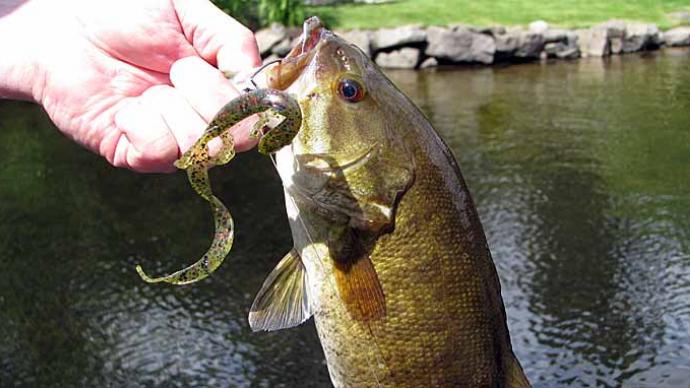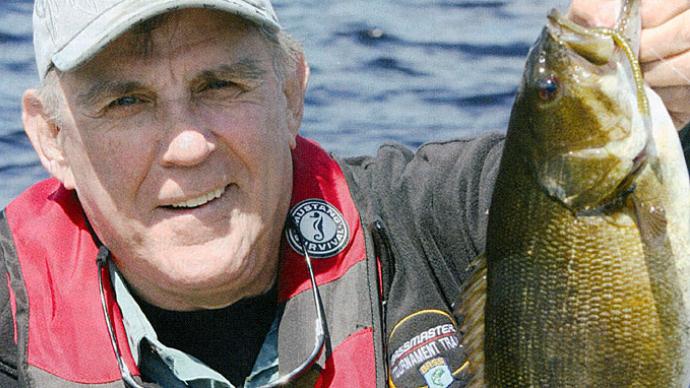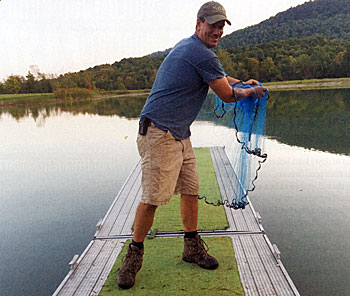
The winter of 2015-2016 was relatively short, and by most measures exceptionally mild compared to most years. Here in the northeast, we only had two really cold spells where temperatures dropped below zero. On my home pond, ice usually comes to the pond around Thanksgiving and leaves at April Fools. This year was different with ice duration from January 3rd to March 1st. Ice came on many larger lakes even later and left earlier, which was great for my family, because my son could access one of his favorite pastimes sooner than expected—chasing pond fish—by any means and with any gear at his disposal. This means dad or mom go to the shore for some pondside supervision. The short pole hand net, the long handled hoop net, hook and worm, the cast net, and the holy grail offish catching gear—the minnow trap— are checked.
So I am driven (almost daily) by this young man to sample our pond's fish. A newly caught fish is ALWAYS brought to my attention. And since my 6-year-old is not quite capable of throwing a cast net, I am the primary vehicle for at least half a dozen tosses a day. This is great because it gives me an opportunity to interact with my fish regularly and often. Since I am a Fisheries Professor, I like to think of this as a long term data set.
I am often surprised by what we catch on these forays to our dock. This year I accidentally forgot to pull out the minnow trap and it froze in for the duration of ice cover. As soon as the ice went off the pond, it HAD to be checked immediately. When we pulled the two month-long set, we dumped the contents into a large bowl (commandeered from the kitchen. Sorry mom). We started identifying and throwing things back. Dozens of young of the year pumpkinseed, red spotted newts, and a few golden shiners dominated that catch, which was expected. One different fish, a young of the year smallmouth bass, really surprised me. This fish was barely 3". Why was I surprised? I stocked catchable size (8") smallmouth in the pond last NOVEMBER, and there was no way these larger fish spawned to produce that young of year fish. That YOY smallmouth bass stunned me, and I had to think hard about why that fish was there. After visiting with the pond accountant and historian (my wife) she remembered that I had made an ill-advised pond decision.
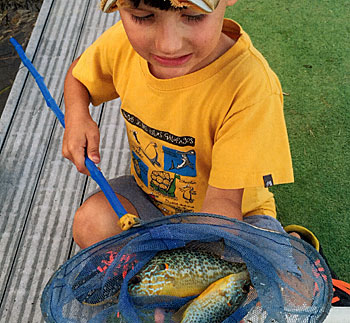
Six years ago, I had hired someone to stock smallmouth into the pond during a record heat wave in the middle of the summer. During this heat wave, pond temperatures pushed into the 90's with air temps near 100. I was away and this young person was relatively inexperienced with moving fish and when he stocked them into our pond, they all died, or did they? This would-be helper felt bad and showed up the next day to help us pull out the dead smallmouth. All the next day we hauled out a total of 50 dead smallmouth bass. We did not restock. Two years ago during a routine cast net off the end of the dock we caught a spectacular 14" smallmouth in a pond where ALL of the bass supposedly died. Some of these bass apparently lived and we had miscounted. I passed this nice bass off as a fluke one off fish that was the lone survivor of a catastrophic stocking event. We kissed him and let him go. Fast forward to last fall when we stocked smallmouth in earnest in November with 200 eight inch fish introduced with care into the chilly November waters, and then to this small 3" fish in the minnow trap in spring. More fish than we thought survived the initial stocking in 2010. At least one more anyway, a breeding pair must have survived to produce the young of the year in my hand.
This surprise reproduction was discovered by two things: 1.) My son's incessant drive and passion to go to the pond every night to catch fish, and 2.) Accidentally leaving a minnow trap in the water all winter. Passion and accidental discovery. Hmmmm. I am reminded that some of the best things we learn are a combination of those two things.
What else have we learned by these daily investigations? Well, there are bullheads that live under the dock. Big ones! And they fight hard when caught! Fathead minnows that were once very abundant after stocking are now barely present in the face of increasing predation. Declining fathead numbers were expected to jump- start the forage base in the pond after construction and then diminish. They did, and they are. Golden shiners are large and their numbers are also declining, but they like the taste of pizza dough on a small size-12 hook. Old pumpkinseeds are large, but young ones are abundant and are becoming stunted. The pumpkinseed herd needs to be thinned by those newly stocked (and spawned) smallmouth.
The best fishing in the pond is right off the side of the dock where submerged aquatic vegetation ends in about six feet of water. Despite my nephews' and nieces' best efforts to locate the best fishing spots around the pond, everyone ends up clustered on the dock. Upon reflection of this fact (observed at a Fourth of July picnic), I need to add more structure around the pond. After all, structure is more for the fisherman than the fish. I had visions of doing this by piling large clusters of big rocks on the ice of the pond.
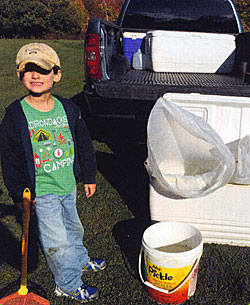
But the ice never got thick enough to haul the rock to where I wanted it to go. As I clear trails around the property, I may settle for some sturdy wood instead, such as Juneberry (serviceberry), ironwood, blue beech, or hop hornbeam, which are all fairly abundant. These woods are hard and all decompose slowly in water. This structure will help the fisherman locate the fish.
Another accidental learning experience came two years ago while I was busy at work. The polar vortex we hear so much about kicked in one night, leaving my dock and swim platform locked into 3 inches of ice. Normally, I would have had the foresight to hook the tractor onto the floating dock and pull its 30-foot aluminum length up the hill on rollers. Nope, could not be done. Mother Nature beat me too it. Locked in til' spring. After ice out in spring, I went to the dock (to fish of course!) to inspect the damage expecting to see the dock in pieces. Damage? None! Actually, I did more damage to the dock's foam floatation undercarriage pulling it out, than winter caused by leaving the dock in. Now I do nothing and just leave it in, saving myself a half-day in the fall taking it out and a half-day in spring putting it in! Now this may not be for you and your situation. My pond is small (1.3 acres) and the ice is not mobile during break up. If the ice were mobile, as it is in a large lake, it would be bye-bye dock. Hmmmm.
Anyway, I have always believed the resident depths of our water are more unknown than known, and my own pond demonstrates this to me all the time. I think I know what is going on in my pond, but I am often surprised by what we find. There is a mystery underwater that drives me to the dock every night, just as it drives my son. "Dad, can we do more cast net...?"
Reprinted with permission from Pond Boss Magazine

